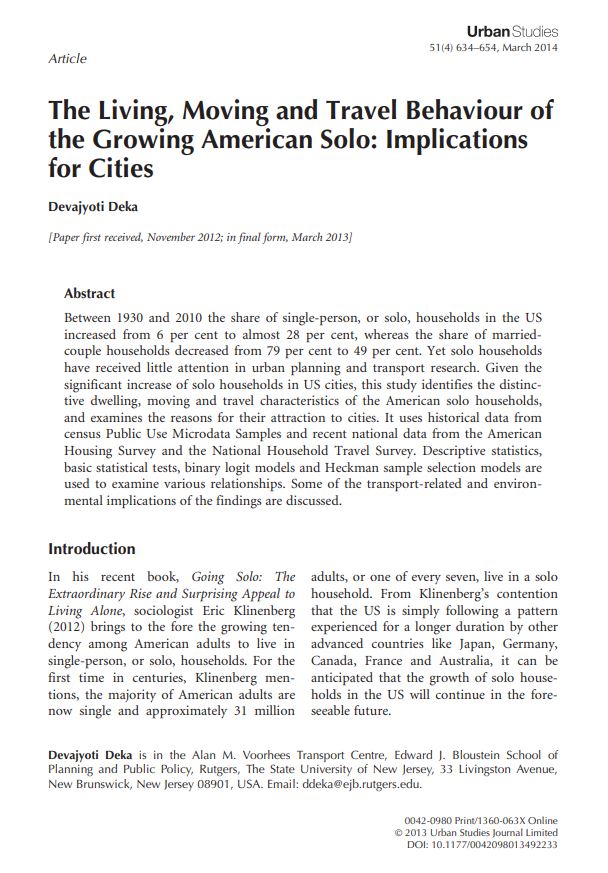Abstract
Between 1930 and 2010 the share of single-person, or solo, households in the US increased from 6 per cent to almost 28 per cent, whereas the share of married-couple households decreased from 79 per cent to 49 per cent. Yet solo households have received little attention in urban planning and transport research. Given the significant increase of solo households in US cities, this study identifies the distinctive dwelling, moving and travel characteristics of the American solo households, and examines the reasons for their attraction to cities. It uses historical data from census Public Use Microdata Samples and recent national data from the American Housing Survey and the National Household Travel Survey. Descriptive statistics, basic statistical tests, binary logit models and Heckman sample selection models are used to examine various relationships. Some of the transport-related and environmental implications of the findings are discussed.
